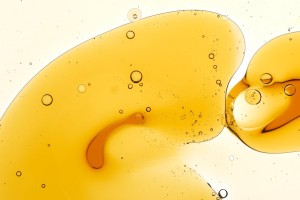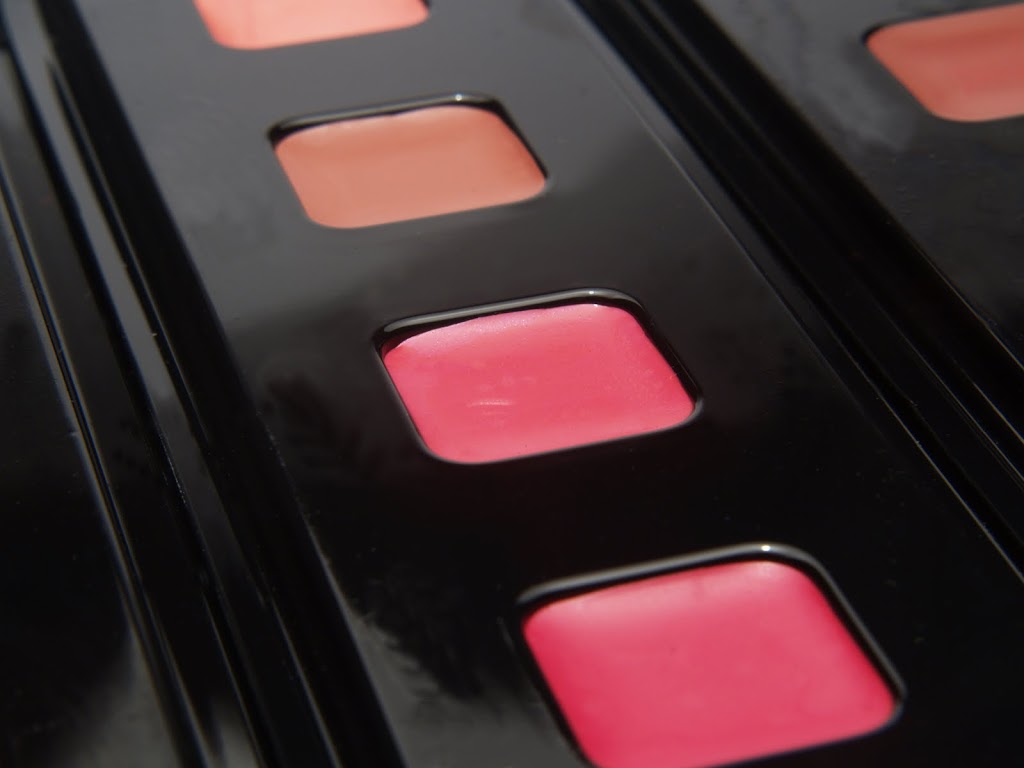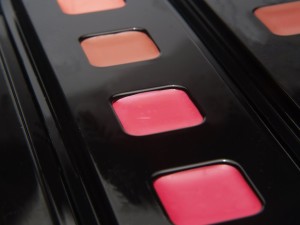
by theglamscientist | | atopic dermatitis, eczema, fatty acids, linoleic acid, oleic acid, palmitic acid, pumpkin seed oil, stearic acid |

As you may already know, my son has severe eczema. I used a hydrocortisone compound nearly everyday for a year to keep his skin clear. After getting conflicting opinions about whether or not there would be adverse side effects, I chose to discontinue use. Instead, I looked to natural emollients to keep his skin moisturized. Evening Primrose Oil has a standing reputation for being an effective treatment for eczema and psoriasis, so I tried it. I didn’t notice any drastic change in the condition of my little man’s skin so the search continued. A friend of mine came by and put a little Emu Oil on his arms which instantly stopped the itching and softened his skin. FANTASTIC!… except Emu Oil is expensive 0_0
Finally, I tried Pumpkin Seed Oil. I already use it in a lot of my branded products because of all it’s skin benefits, but I never put it on my son. Oh how I wish I tried it sooner! I put it on him after his bath and his skin was still moisturized throughout the day. By Day 2 of using the Pumpkin Seed Oil, I can already see his rough patches clearing and his skin does not appear dry at all. I haven’t used ANY lotion, but I’m sure adding that back to the regimen will be even better.
So what’s in Pumpkin Seed Oil? AWESOMENESS!
Pumpkin Seed Oil has a significant amount of fatty acids, notably: linoleic, oleic, palmatic and stearic acids. Linoleic acid helps prevent transepidermal water loss. In other words, it keeps moisture in the skin. Oleic acid is a penetration enhancer that helps transport the benefits of a cosmetic to deeper skin layers. Palmitic and stearic acids occur naturally in the skin barrier lipids. Pumpkin seed oil also has a wealth of vitamins and minerals to nourish the skin.
Word to the Wise
This is a heavy oil and a little goes a long way, so use it sparingly. Also, it has a noticeable “nutty” scent just like pumpkin seeds. Although the scent doesn’t last, I recommend putting it on at night to avoid smelling like Halloween.
What have you used to treat your eczema?
by theglamscientist | | lipgloss, lipstick, nail polish, speech, the lipstick theory |
I’ve been away from the blog for far too long, but with good reason. Things are picking up in the lab and I’ve been working on a little personal and career development. I recently joined Toastmasters International which is a world reknown public speaking and leadership organization. My primary goal was to refine my speaking skills to position me for a few business goals. I decided to that the cosmetics industry would be the general topic of all of my speeches. This week’s speech covered the lipstick theory which I thought to be both timely and interesting. I thought I would share a synopsis of the speech here to let you all into another part of my Glam World. 🙂
The lipstick theory arose out of the fact that in spite of economic disaster, women still purchased lipstick. It is representative of the idea that people always need a touch of luxury, even if it is an “affordable luxury” like lipstick. The theory held weight in 2001 following the 9/11 attacks when key players in the industry like Estee Lauder saw an increase in their cosmetics sales. While 9/11 was not quite a major economic disaster, it was certainly a precursor for what we face today.
The recession has shown that the lipstick theory is plausible, although it may be due for a name change. Nail polish has risen as the ultimate female recession buster which is not a great surprise considering the similarities. Both lipstick (lipgloss) and nail polish come in a multitude of colors, styles and textures so there is something for everybody. Color has a way of altering moods and complimenting personalities and styles. Personally, lipgloss and nail polish make me feel feminine and can instantly boost my mood. Women love to feel pretty so even if we can’t afford a fancy dress or the fab shoes of the season, we can usually splurge on choice glam cosmetics.
Clearly, this is not the 6 and 1/2 minute speech I gave at my club earlier this week, but that’s it in a nutshell (minus the quotes and the numbers, etc). You can expect more of my speech summaries in future blogs. 🙂

by theglamscientist | | chemical sunscreen, physical sunscreen, sunscreen, UV radiation, UVA, UVB |

Now that we’ve discussed what SPF is and how it’s determined, we can get into a few of the ingredients that actually deliver the sun protection.
Octyl Methoxycinnamate (octinoxate) is the most common chemical sun blocking agent. It absorbs UVB rays and also has waterproofing qualities which makes it ideal for summertime fun. When exposed to the sun, Octyl Methoxycinnamate loses some of its effectiveness so it is rarely the single sun blocking ingredient found in a sunscreen formula.
Octyl Salicylate is a less effective UVB absorber. It is often used in conjunction with other blocking agents as its effectiveness decreases upon sun exposure. Although uncommon, this ingredient has been known to produce mild skin irritation. There is also concern that this ingredient is a penetration enhancer which means it may make the skin more susceptible to invasion by other topical treatments that ordinarily couldn’t pass through the skin’s natural barriers.
Oxybenzone and its close cousin Sulisobenzone are both photo stable (not affected by sunlight) chemical UVB absorbers. They are typically used to stabilize other UVB absorbers that degrade with sun exposure. These chemicals can possibly be absorbed by the skin and raise concern of free radical invasion.
Titanium Dioxide is a physical sun blocking agent that is effective in the UVB and UVA range of the light spectrum. It covers the full UVB range however it doesn’t reach the peak region of UVA. Titanium Dioxide is a common sun blocker in natural formulations. It is very efficient in preventing sunburn; however since it does not cover the entire UVA spectrum, skin cancer is still a relative concern. Most over the counter sunscreens that contain this ingredient incorporate other chemical and physical UV blockers.
Although Titanium Dioxide is stable, it has been known to cause reactions with other chemicals which again raises the possibility of free radical formation. This ingredient is unsightly as it goes on white and stays white. Titanium Dioxide nanoparticles (super small) are a more esthetically pleasing option because they leave a less noticeable white residue, but the verdict is still out on the safety of such. On a positive note, Titanium Dioxide is not known to cause skin irritation and is even safe to use on sensitive skin.
Zinc Oxide is another common physical sun blocker that is actually more effective and less reactive than Titanium Dioxide. In fact it covers the full range of UVB and UVA wavelengths which makes it the most effective single ingredient sunscreen available. Even so, it is usually used in conjunction with other chemical protectors. Zinc Oxide is not a known skin irritant and it can be used on sensitive skin. Similar to Titanium Dioxide, Zinc Oxide leaves a white residue on the skin. In nanoparticle form there is the threat of formation of free radicals, however, scientists have been successful in coating the nanoparticles to prevent such occurrences.
What’s in your favorite sunscreen?

by theglamscientist | | spf, sun care, sun protection factor, sunscreen, UV radiation, UVA, UVB |

Late last week, someone tweeted that they were about to put on their SPF 100 lotion. My immediate reaction was “Wow! Marketing at its finest!” We all know by now that sunscreen is of the utmost importance in protecting our skin from harmful sun rays. Sun damage rears its ugly head in the form of dry rough skin, wrinkles and even skin cancer. None of which any of us want. But is one SPF any better than another? Let’s explore sun protection.
What are we afraid of?
There are actually 3 forms of UV (ultraviolet) rays: UVC, UVB and UVA. UVC has the shortest wavelength of the 3 and is also the most dangerous. We don’t often hear about UVC because the ozone layer protects us from those rays. UVB appears next in the light spectrum with a longer wavelength. It is the culprit behind sunburn. Finally, UVA rays have the longest wavelength of all ultra violet light. The longer wavelength results in less damage in a given time period. In fact, the difference in rate of damage caused by UVB and UVA rays is astronomical. UVA rays are thought to cause more long term damage that may affect deeper layers of the skin. In short, we should focus on protecting our skin from both UVB and UVA rays.
I like to use metaphors to simplify science so let’s try this explanation of UV rays. Consider a day at the beach. The day could be pleasant—warm, sun shining, very relaxing… there’s a gentle breeze so any noticeable waves are few and far between. Or the day could be slightly overcast with a stronger breeze… waves are coming with significantly more frequency, but it’s not exactly a tropical storm. Then you have stormy weather, not only is it cold and wet, but the waves are beating the shore more often than not. The frequency and tenacity of the waves at the beach represent the various UV rays. The best day at the beach correlates to UVA and the worst day to UVC. Get the picture? Good!
Sunscreen agents are classified as physical protectors (UV reflecting) or chemical protectors (UV absorbing). The physical protectors work to reflect both UVB and UVA rays. Chemical protectors generally absorb UVB rays although there is some overlap in function between the two. Some UV protectors are compromised by the sun; thus, they must be used in conjunction with other ingredients to stabilize them.
So what is SPF and how is it determined?
Sun Protection Factor (SPF) refers to the level of UVB protection a product offers. Note I said UVB protection. Currently there is no test for level of UVA protection in a product. While many companies have released high SPF products ranging from 45+ to 100, this is more of a marketing strategy than a real difference in protection. It would be easy to assume that SPF 30 was twice as effective as SPF 15 and so on, however, that is not the case. In reality, SPF 15 will block around 94% of UVB rays, SPF 30 blocks 97% and SPF 45 blocks 98%. The increase in sun protection becomes more and more negligible as the SPF increases. In essence, an SPF of 100 is not as amazing as it sounds.
In order for a product to make an SPF claim, it must undergo clinical testing. In this testing, 10-20 healthy, fair skinned individuals are exposed to UVB radiation from an artificial source similar in intensity to that of the noon sun. The test measures the time it takes each participant’s skin to burn while wearing sunscreen in comparison to the time it takes the skin to burn without sunscreen. Of course, everyone’s skin is different, thus the average of this ratio is taken to determine the SPF of a given product. Keeping in mind that testing is very controlled, there are a number of factors that will determine how well a given product will protect you. Those factors include the actual intensity of natural UVB rays, your unique skin type, the amount of sun care product you apply and how often you apply it.
To sum it all up:
Everyone needs sun protection.
Don’t believe the hype, SPF 30 is Glam approved.
Use sunscreen liberally and apply it often, especially when you’re outdoors.
Here’s to the Glam Life!

by theglamscientist | | chromium dioxide, color cosmetics, inorganic pigments, iron oxides, manganese, titanium dioxide, ultramarine, zinc oxide |

“Nothing says Spring and Summer like color, color, color!”– Me
When spring arrives, there’s color everywhere– green grass, pink and lavender flowers, blue skies. It’s nothing short of inspiring, so out comes the colorful nail lacquer, lipstick, gloss and eyeshadow. Various ingredients both natural and synthetic go into making the beautiful colors you wear on your eyes, lips, cheeks and nails. I thought it would be fun to explore color with you from a nerd’s perspective, so this is Part I of a series of all things color…. Welcome to my Glam Color Lab 🙂
On the Natural Side
Natural colorants are popping up everywhere, but how do you know if your fave natural beauty product really is? Mineral makeup is mostly comprised of inorganic pigments. For this discussion, the terms organic and inorganic do not refer to the method of growth or extraction. Instead, the terms will be discussed in their chemical definitions. Simply put, organic chemicals contain Carbon, inorganic chemicals do not. Inorganic pigments are metallic compounds found in nature and refined for use in cosmetics.
Iron oxides are inorganic pigments that are very popular in makeup products. Iron oxide colors are typically shades of red, yellow and black. They can be blended to make an array of natural colors for blush and foundation. There are no restrictions for the use of iron oxides so they are safe for eye and lip products as well.
Chromium dioxides are another category of inorganic pigments used in makeup products. They are available in shades of green ranging from darker greens like olive or brighter blue greens, etc. Chromium dioxides are not approved for use in lip products.
Ultramarines cover a broad spectrum of color. There are ultramarine blues, greens, pinks and purples. While the ultramarine blue shades are not approved for lips, the others are all fair game for outrageous lip, eye, face and nail colors.
Manganese is a bright purple color and is also an inorganic pigment. It is most popular in lip and eye products, but that’s probably obvious. When I was an undergrad chemistry student, I LOVED working with manganese because it was so pretty. I thoroughly enjoyed all my chem labs, but sometimes it’s drab and mundane… manganese brightened my day a few times 🙂
Iron blue is a very dark and intense blue inorganic pigment. If you haven’t already noticed the trend, iron blue is not approved for use in lip products. However, it is widely used in other cosmetic products.
We’ve discussed the basic colors which can be mixed, matched and blended to create some amazing color cosmetics, but what about white? Titanium dioxide and zinc oxide are commonly used to achieve the white color in color cosmetic products.
All of the above pigments can be found in nature. Commonly, they exist with other metals and must be separated and purified to cosmetic grade.
In future posts for this series, we will discuss micas, FD&C and D&C colorants, lakes, organic pigments, metallics and pearls, etc. You won’t want to miss finding out what’s really in your color cosmetics.
Got a question about color? Leave a comment!
Here’s to the Glam Life!








